Charge Infusion success at a Massachusetts-based hospital.
From manual to automated infusion coding: How this hospital improved charge throughput and is capturing more revenue.
CHARGE INFUSION CASE STUDY
From Manual to Automated Infusion Coding
How This Hospital Improved Charge Throughput and is Capturing More Revenue
A long-time medaptus Charge Pro customer for their charge capture and reconciliation process, this
Massachusetts-based hospital was benefiting from automating their revenue and reconciliation process to reduce charge lag, capture all the revenue for their services, and reduce insurance denials.
The Problem
When it came to infusion billing, that was a different story. Infusion billing is notoriously complicated, with risk for compliance and financial implications when not done correctly. Since this hospital has a leading-edge cancer care center and operates a number of high-volume infusion centers, they were looking to ensure they were capturing all the revenue associated with the procedures they were performing.
- Unrecognized NDC drug code: It wasn’t always clear which drug was administered, whether it was a chemo, med or hydration. Again, this has huge revenue impacts as the amount of revenue you’re allowed to bill for is different depending on the drug code. Now, medaptus’ Charge Infusion automatically updates the code set to avoid these issues.
- Mixed drugs in one bag: This created confusion for nurses because only one drug could be billed as primary. In order to know which to bill, the nurse would have to look at the NDC codes. This also had a huge revenue impact as whenever administering multiple drugs, you want to charge for the highest one in the hierarchy, which would be chemo. Nurses weren’t always familiar with this, causing lots of revenue to be left on the table. With medaptus in place, this decision making is now built into the platform.
- Bi-lateral injection. Often, documentation would come back with a single code and a reference to bilateral delivery – but that would have to be re-worked by coders. This is another case that is handled with automation with medaptus as not to lose vital revenue – and to free coding staff from having to identify and correct errors.
Now 100% Automated
4,000+ physicians served
35,000+ employees served
The Result
Infusion billing is now 100% automated with Charge Infusion. Now, the hospital’s coding team spends 75% less time reviewing infusion charges and matching the information to corresponding documentation. Today, the only corrections they have to make are in scenarios with late documentation. Now, their infusion visits are usually billed within three days of the visit. For 90% of the charges, the review happens in near real-time so that bills can be generated the next business day. This ensures that reimbursement happens quickly, generating positive cash flow. The remaining 10% of the charges require additional research to handle issues like missing documentation information or other potential exceptions that the coders can now quickly handle, since they are now focused on reviewing these abnormalities, rather than reviewing every single charge.
As a result, they’ve also been able to reduce the number of coders on staff and/or reassign coders to other areas of the organization. Plus, since billing is done directly from the integrated documentation in the EHR, they’ve increased compliance and reduced the amount of time nurses have to spend on billing.
Most importantly, they’re no longer missing out on capturing revenue that was left on the table before. They can rest assured that their infusion billing is done correctly, and no one has to manually calculate the many factors that play a role in infusion billing, so they get all of the revenue they’re entitled to, for each visit.

